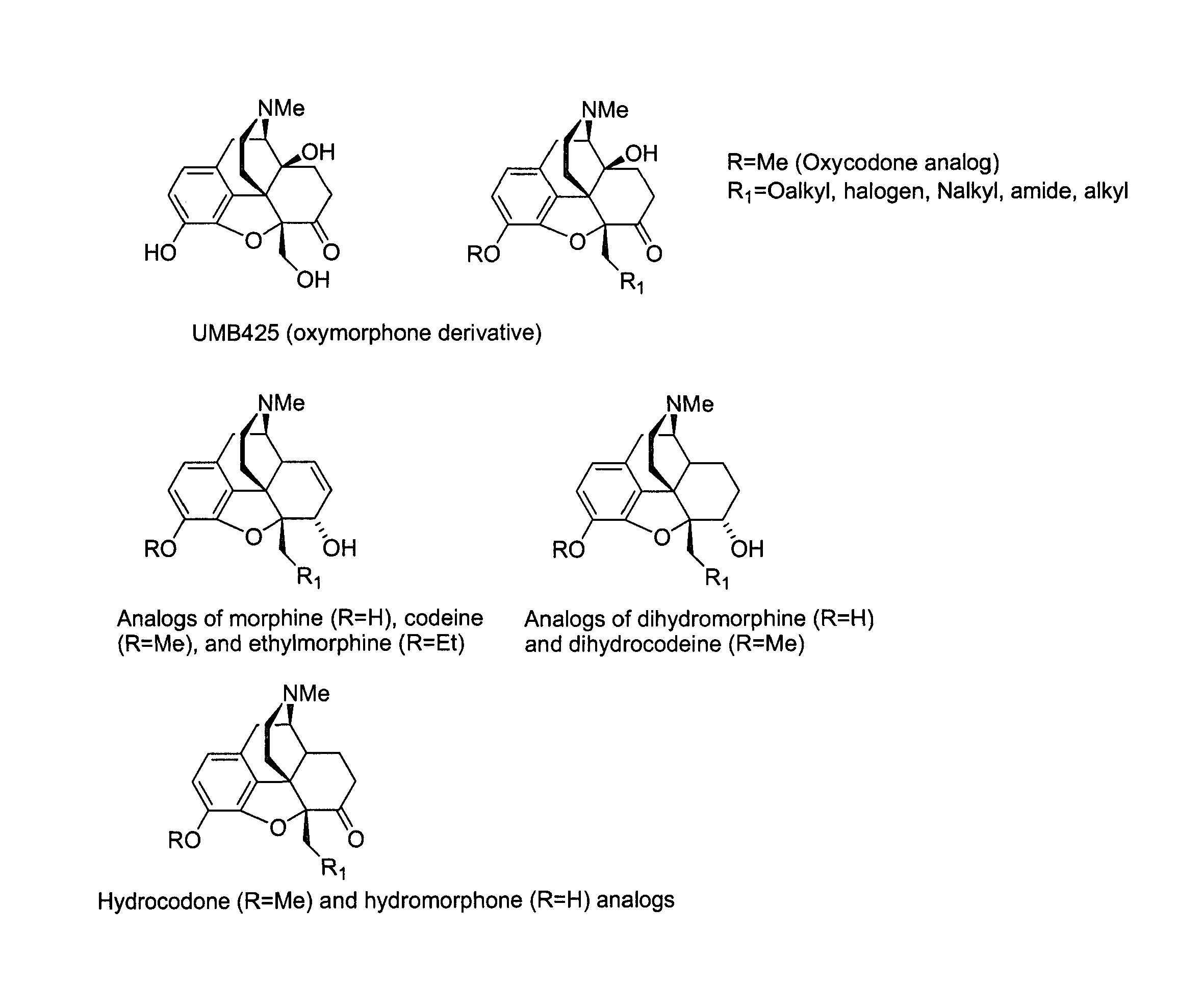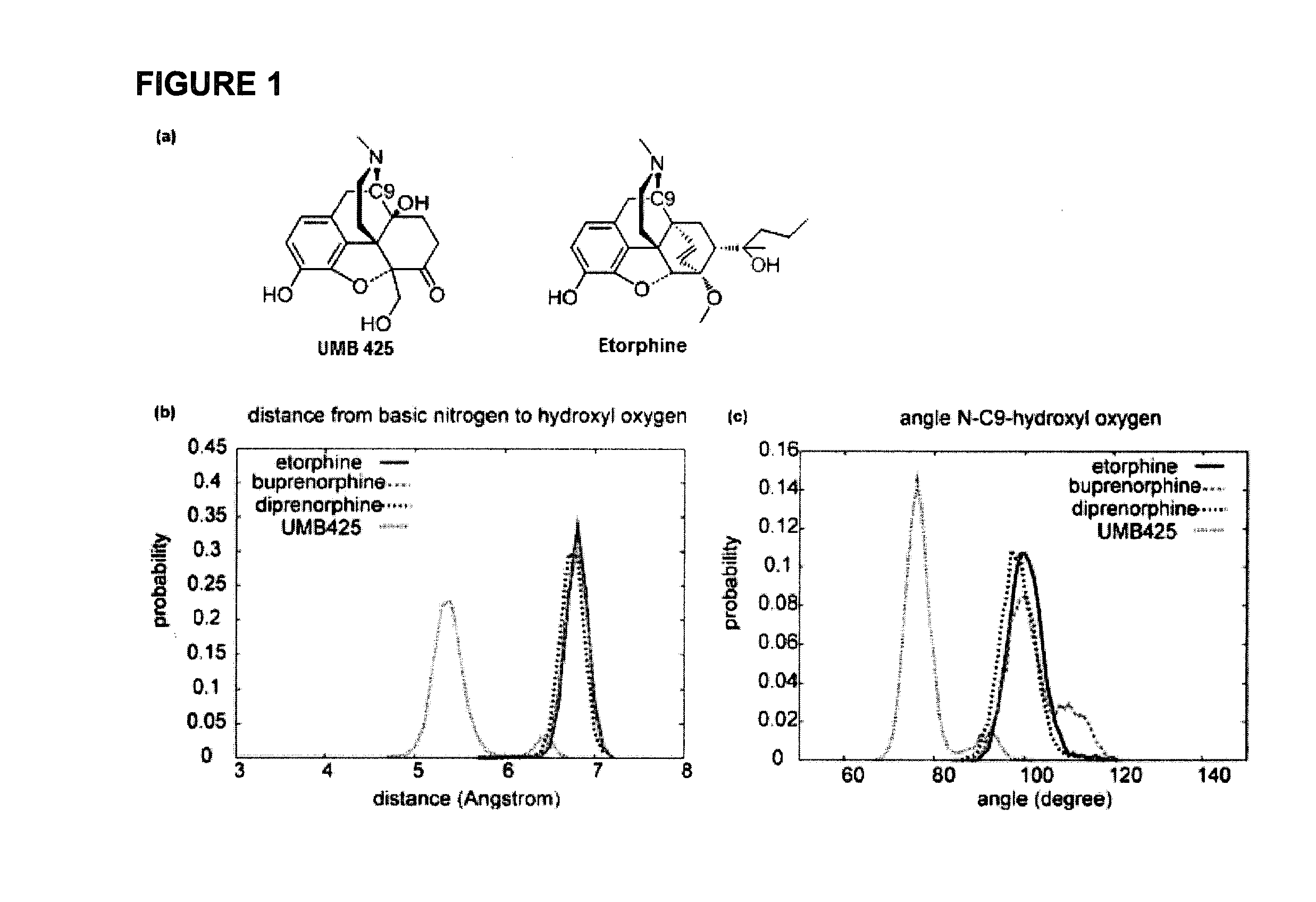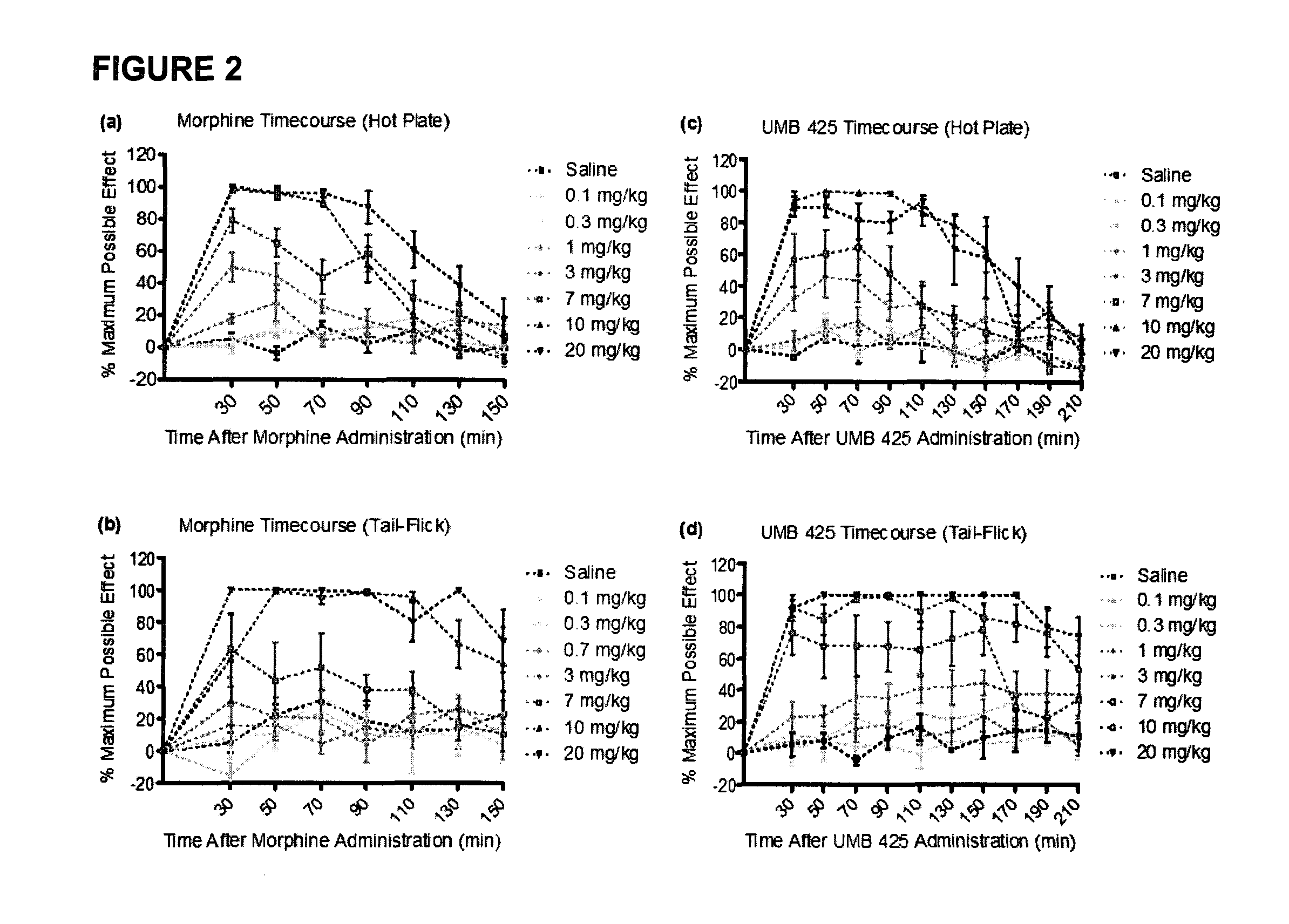Novel mixed μ agonist/ δ antagonist opioid analgesics with reduced tolerance liabilities and uses thereof
a mixed agonist and antagonist technology, applied in the field of new mixed agonist/agonist antagonist opioid analgesics with reduced tolerance liabilities, can solve the problems of increasing attenuating the side effects, and side effects, etc., to achieve potent analgesic properties, eliminate the possibility of death, and improve the effect of toleran
- Summary
- Abstract
- Description
- Claims
- Application Information
AI Technical Summary
Benefits of technology
Problems solved by technology
Method used
Image
Examples
Embodiment Construction
[0027]The development of novel opioid ligands with mixed μ agonist and δ antagonist activity has therapeutic potential for the treatment of pain with a lower side effect liability than commonly marketed opioid analgesics. Towards this goal a number of peptidic as well as bivalent and bifunctional non-peptidic ligands have been developed that achieve this desired pharmacological profile, but have inherent problems that limit their potential as therapeutic agents. The present invention includes UMB 425, a novel opioid that lacks a typical δ-selective motif, yet exhibits mixed μ agonist / δ antagonist activity, robust antinociceptive effects, and a reduced tolerance liability compared to morphine.
[0028]Synthesis.
[0029]A highly efficient method for the synthesis of UMB 425 is summarized in Scheme 1. Briefly, deprotonation of thebaine (1) followed by in situ reaction of the anion with ethyl chloroformate yielded 5-carbethoxythebaine (2) (25). Reduction of the ester (2) with lithium aluminu...
PUM
| Property | Measurement | Unit |
|---|---|---|
| temperature | aaaaa | aaaaa |
| concentrations | aaaaa | aaaaa |
| concentrations | aaaaa | aaaaa |
Abstract
Description
Claims
Application Information
 Login to View More
Login to View More - R&D
- Intellectual Property
- Life Sciences
- Materials
- Tech Scout
- Unparalleled Data Quality
- Higher Quality Content
- 60% Fewer Hallucinations
Browse by: Latest US Patents, China's latest patents, Technical Efficacy Thesaurus, Application Domain, Technology Topic, Popular Technical Reports.
© 2025 PatSnap. All rights reserved.Legal|Privacy policy|Modern Slavery Act Transparency Statement|Sitemap|About US| Contact US: help@patsnap.com



